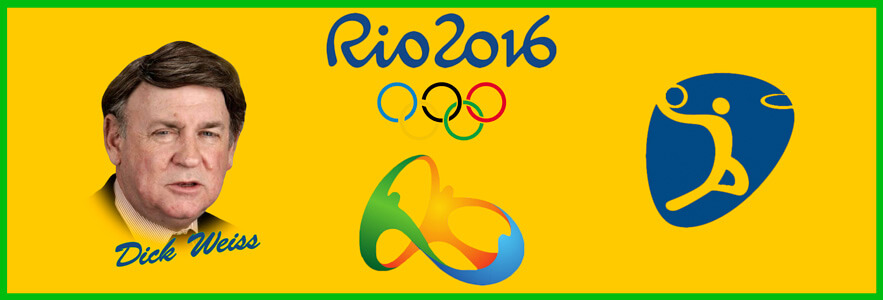RIO DE JANEIRO — There has been a rush to judgment to declare the 2016 Olympic women’s basketball team the best ever to play internationally before this tournament is over.
And while the margin of victory so far– 105-62– could back up that claim, it is hard to say whether this Geno Auriemma coached team, future Hall of Fame inductees point guard Sue Bird, forward Tamika Catchings, guard Diana Tarausi, guard Maya Moore, 6-8 center Brittney Griner and 6-5 forward Breanna Stewart would beat the unbeaten U.S.1996 gold medal team in Atlanta in their prime.
The United States that year cruised to a 117-87 victory over Brazil in the finals to cap off an 8-0 record before a crowd of a crowd of 32,987 fans at the Atlanta Georgia Dome, setting the stage for the grand opening of the WNBA the following season.
The team, which was coached by Tara Van Derveer and dominated by Lisa Leslie, Katrina McClain and Sheryl Swoopes, still holds several U.S. Olympic records, including a 102.4 point scoring average and 207 assists, records this current team could break. They practiced for a year and a half. This was the first time USA Basketball had ever put together a team and the results changed the game, opening the door for the NBA to create a female partner, the WNBA, in 1997.
“We were machines,” back up guard Nikki McCray said.
The first women’s Team Dream went 60-0 during their time together, winning their exhibitions by an average of 45.2 points. The players earned $50,000 the year they toured together, traveling around the globe, logging over 100,000 and playing 52 friendlies before the summer games. They inspired a generation of players who wanted to follow in their footsteps.
The roster for the 1996 team included guard Jennifer Azzi, guard Ruthie Bolden, guard Theresa Edwards, 6-5 center Lisa Leslie, 6-5 center Rebecca Lobo, 6-2 forward Katrina McClain, McCray, 6-2 forward Carla McGhee, guard Dawn Staley, 6-0- small forward Katy Steding, 6-0 forward Sheryl Swoopes and 6-4 reserve center Venus Lacey.
The starters were Leslie, McClain, Edwards, Swoopes and Bolden.
Leslie, Swoopes, Edwards, Staley and McClain have all been inducted into the Naismith Basketball Hall of Fame, along with their coach Tara Van Derveer, a demanding Pete Newell disciple who drove that team to greatness, playing before crowds of over 30,000 at the Georgia Dome.
The USA Basketball organization, with input from VanDerveer, decided to depart from the usual strategy to form a team a few weeks before the event, which severely limited the practice time. Instead, they decided to form a full-time national team to stay together for a year, preparing to the 1996 Olympics. VanDerveer was chosen as head coach, but was expected to take a one-year sabbatical from her head coaching position at Stanford.
VanDerveer had worked with USA Basketball teams in 1986 and 1990,and served as the head coach of the team representing the USA at the 1991 World University Games. That team went 8–0 and won the gold medal in Sheffield, England. Two years later, she coached the team in the World Championship qualifying event.
She continued at the coach of the National team at the 1994 World Championships in Sydney, where the USA team won the bronze medal.Two months later, VanDerveer coached the USA Goodwill Games team to a 4–0 record and a gold medal at the 1994 Goodwill Games in Saint Petersburg, Russia. So when it was time to select the Olympic coach, VanDerveer had coached several USA Basketball teams, including the full national team.
Prior to 1996, the head coach had much input into the team selection. While the USA Basketball organization selected the pool of potential players, the head coach chose the final team.
That changed in 1996, when USA Basketball decided to take over the selection role. The initial selection was of 11 players, with plans to add a 12th player later, which would allow the organization to determine what was most needed. The lack of input lead to some differences of opinions, as VanDerveer was concerned about teams like China with a 6’8 center. She wanted more size than the USA Basketball organization chose, but knew she had to abide by the selection process.
The 24-year old (at the time) Leslie, who made the first of four consecutive Olympic appearances and earned four gold medals, was the dominant player on the team. She went off for 35 points against Japan in a quarterfinal game, then exploded for 29 against Brazil in the gold medal game that was pay back for a 110-107 loss to the Brazilians in the 1994 World Championships that ended with both teams taking the same bus back to the hotel afterwards.
“They were sitting in the front of the bus, all partying,” VanDerveer recalled. And we had a lot of kids, me included, who were mad. I think that loss opened everybody’s eyes that there were a lot of countries who were good and getting better and moving ahead of it. We had a lot of work to do.”
Mission accomplished..
Swoopes added 16 for the U.S. in the final. All 12 members scored. The Americans also set a record by shooting 66.2 percent from the field en route to the first gold medal for the U.S. since the 1988 Olympics.
Leslie went on to become the all-time leading U.S. scorer in international competition.
The international competition seemed stronger back then. The Soviets, with 7-2 center Ulijana Semonova, , were a dominant power in the 70’s and 80’s, winning the first Olympic tournament in 1976, 95-78, over the United States and then winning again 1980 when the Americans boycotted Moscow. The Unified team with Russia won another gold medal in 1992. Brazil, Australia, Eastern bloc countries Czechoslovakia and Bulgaria were also medal contenders.
The landscape has changed as more countries invested money into their federations and Australia, Serbia. Spain, France and Turkey have all taken steps forward. But there is a much larger gap between Team USA and the rest of the world right now.
Auriemma has the luxury of a big front line with Griner, 6-5 Elena Della Donne and 6-3 Tiny Charles and the best back court in the world– Bird and Taurasi. The 1996 team could counter with Leslie, the best American center ever, athletic forwards in McClain and Swoopes, a pure shooter in Bolden and two Hall of Fame guards– Edwards and Staley the chemistry forged by all that time spent together.
It would make for an interesting fantasy game.
“Yeah, they have a lot of talent today,” McClain said “But man, the talent then to me, in my opinion, was just off the chain.”
Dick Weiss is a sportswriter and columnist who has covered college football and college and professional basketball for the Philadelphia Daily News and the New York Daily News. He has received the Curt Gowdy Award from the Naismith Basketball Hall of Fame and is a member of the national Sportswriters Hall of Fame. He has also co-written several books with Rick Pitino, John Calipari, Dick Vitale and authored a tribute book on Duke coach Mike Krzyzewski.










